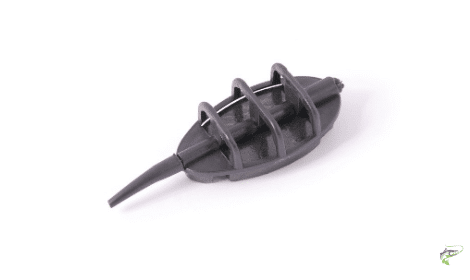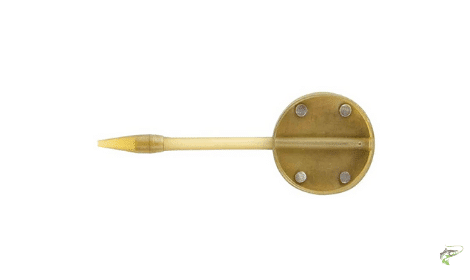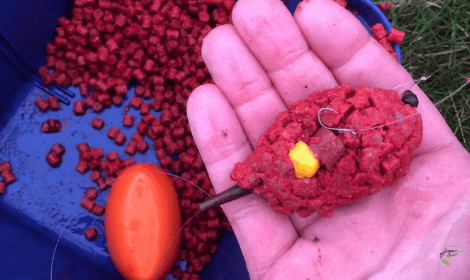
It is well-known within the coarse fishing community that method feeders provide an excellent tool for drawing fishing into your swim and inevitably catching more fish.
This fishing technique sprung into action in around the 1900s so is still very much a new and modern way of catching carp but in most cases it can completely blow the more traditional methods out of the water.
I’m sure all you experienced carp and coarse anglers out there are well aware of the powers of the method feeder and the majority of people who have landed onto this page want answers to the question of “What is a method feeder?”.
Am I right?
This post will detail exactly what a method feeder is, a bit on the background of the method feeder, the types of method feeder you can buy and even the baits that work well with this technique to help you catch more fish.
What is a Method Feeder?

So let’s not waste any time and get right into explaining exactly what a method feeder is.
As I am sure you are all aware, carp are mainly bottom feeders that will often group up on the lake bed to feed when there is food resting on the bottom.
If you can successfully find carp feeding on the bottom then you can guarantee that you have a lot more chance of catching more fish.
So why not create patches of carp bait on the lake bed to attract the carp to your hook bait?
Well that’s exactly what method feeders are used for!
By moulding groundbaits or micropellets around your method feeder and by burying your hook bait and hook within the mixture the method feeder will sink them to the lake bed.
When your feeder reaches the bottom your pellet or groundbait mix should start to break away from your feeder and present your hook bait perfectly on top of this mixture.
In an ideal scenario the carp will congregate in this area feeding on this mixture and more often than not your hook bait that should stand out among the mixture.
For your feed mixture to make it to the bottom of the water and not dissolve as soon as it hits the water you must make sure your mixture is prepared correctly to let the method feeder do its job and successfully take your mixture to the lake bed.
If you are interested in learning how to set up a method feeder and mix perfect micro pellets then this post will set it out in simple and easy steps.
Types of Method Feeder
Now you know what a method feeder is we can start looking at the types of method feeder you can add to your tackle.
All method feeders will usually fall into two categories; Flat bottom and banjo.
As well as these you will also see some marked as “inline” and some not.
Inline method feeders, as the name suggests, will move freely on your line and if the line is snapped when hooked into a fish the feeder will drop off and will not be dragged around by the carp.
This is why inline feeders should be used at all times!
Flat Bottom Method Feeder
Flat bottom feeders, like the one in the picture above, are weighted on the bottom so this lies on the lake bed with your bait facing up.
These feeders will sink to the bottom and the bait moulded around the feeder will start to dissolve and break away from the feeder.
This leaves you hook bait resting on the top of this bait with good presentation.
Flat bottom method feeders will nearly always come with a mould that allows you to pack the same around of feed around the feeder every time so the weight is consistent for casting purposes.
Banjo Method Feeder

Banjo method feeders are also used to take your feed and hook bait to the lake bed but they are slightly different in the sense that they allow anglers to change the size and weight of feeder easily without disassemble of the full rig.
The stem remains mixed to the line and the feeder can be pulled off and new size or weight reattached with ease.
While using banjo feeders your rig can also be left set up in transit and the chances of any damage to your rod blank are highly reduced.
Weight of Method Feeders

Now you know what a method feeder is, how it can aid your fishing and the two different types the next thing you’ll need to know is what weight of method feeder you should be using for your next fishing trip.
Method feeders usually range from around the 15g mark all the way up to the much larger 60g feeders. So what’s the difference between these feeders and which should you choose?
What weight of method feeder you pick is going to come down to two things;
- How far you want to cast
- What swim and venue you are fishing
The first point here is rather obvious. The heavier the method feeder the easier it will be to cast far distances accurately. If you use feeder on the light side even wind can easily influence the direction of your feeder which will make casting to the same swim challenging.
Usually I’d advise not to use anything less that a 30g feeder for standard carp venues in the UK where you never need to cast huge distances over 40 yards.
For anything between 40-60 yards casting a 40g method feeder should be ideal and anything above this a 45g feeder should be fine.
The next thing you need to consider before selecting the correct method feeder size is what venue and swim you are fishing.
As mentioned before how far you are casting will have a massive effect on the weight of feeder you choose and this will depend on the venue.
With most commercial carp fisheries it will be very unlikely you need to cast up to 50 yard or further but in cases where you are fishing large reservoirs or lakes this could be the case.
Another thing that can influence what weight of feeder you choose is where you are casting to. If you are casting to an island slope a heavier feeder is definitely required to anchor your feeder and stop it from rolling down the banking.
Also, if you are fishing large bodies of water, undertow might be an issue so sometimes a large feeder of 40-45g may be required to anchor your method feeder in the spot.
Baits for Method Feeder
As you should now know method feeders are used to transport bait to the bottom of a venue to attract carp into your swim to boost the chances of you catching more fish.
Unfortunately you’ll need to learn what baits are best for mounding around your method feeder. Generally feeder mix consists of either micropellets or groundbait that can be bought in bags online or from angling stores.
Preparing these for you feeder must be done correctly to ensure your mixture does not break down too easily before you feeder reaches the bottom and it must not be too wet and sticky that it stays fixed to the feeder.
Luckily for you I’ve already written two posts that include how to mix micro pellets and groundbait perfectly so this will never be an issue for you. Take a read them here;
Once you’ve picked out your method mix the next thing you’ll need to worry about is what hook bait will give you the best chance of catching. Unfortunately the answer isn’t extremely simple but you can find out the best carp baits to choose from in this post.
That’s All!
You should know exactly what a method feeder is and have a general idea of how to use one to increase your catches. The process is pretty simple once you know the basics.
You should now be ready for the next step of how you set up a method feeder rig. I have written a tutorial that will talk you through exactly how you set up the method feeder rig with simple steps.
If you want to learn how to properly fish the method feeder then take a read at my full method feeder guide.
If you have anything to add or any questions on this topic feel free to leave a comment below and I’ll get back to you ASAP!

